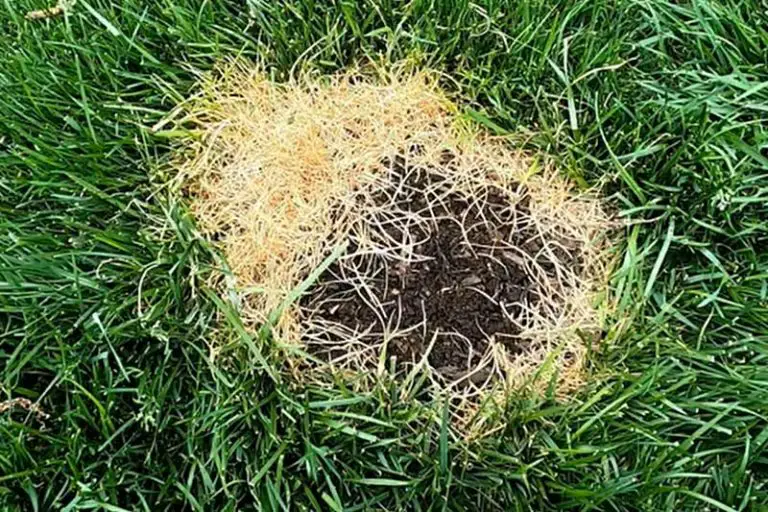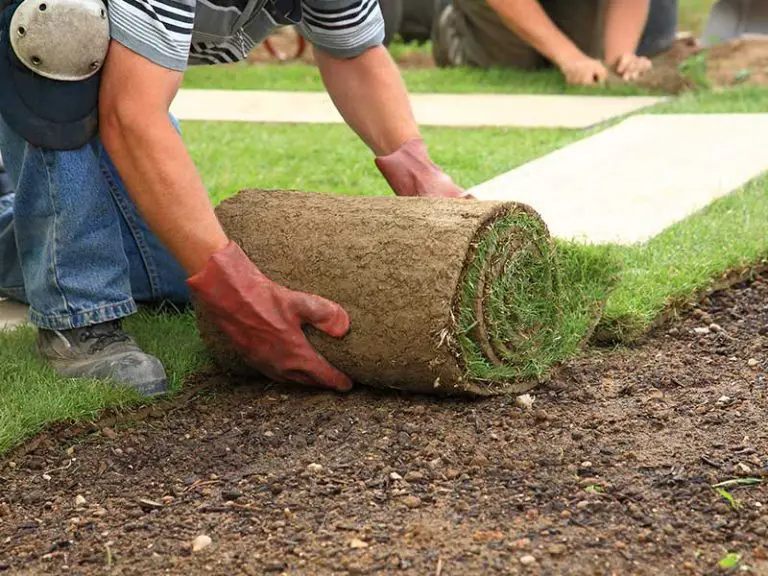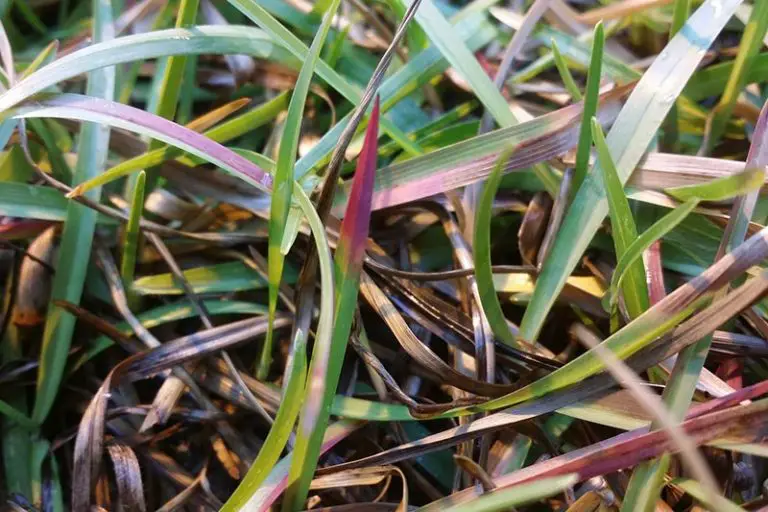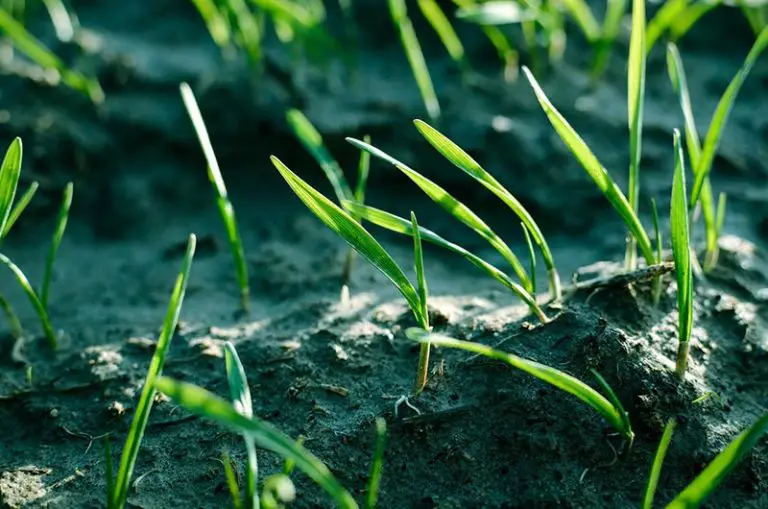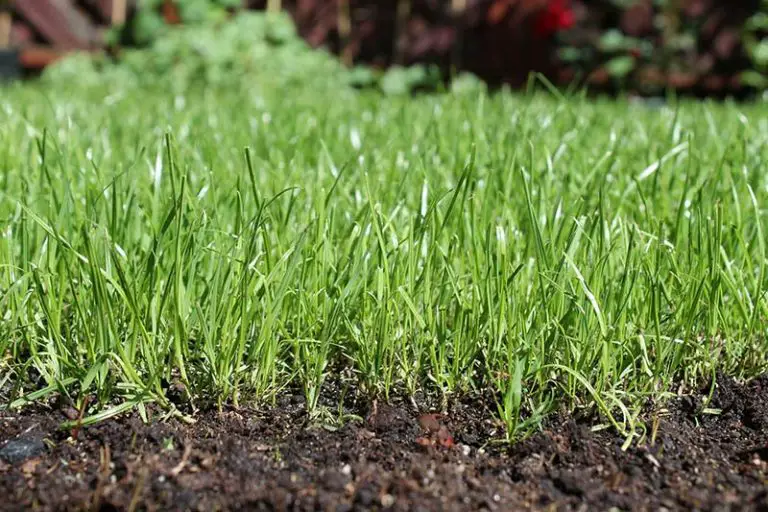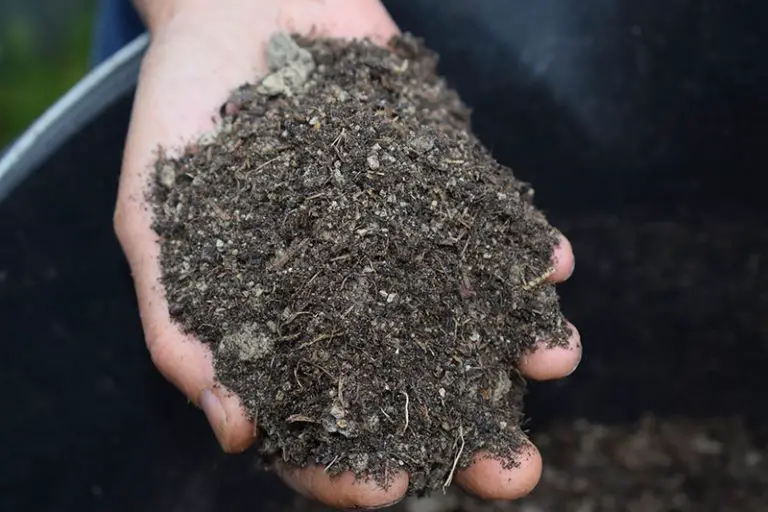How to Compost: A Complete Guide
Composting is not only one of the best activities you can do for the health of your lawn and garden, but also for the good of the wider ecological environment. Creating compost is a free, easy way to recycle household waste, transforming it into a nutrient and biologically rich substance which can then be used throughout your yard as both an organic fertilizer and soil conditioner.
There are several different methods of composting, including starting a compost pile, using a compost bin or tumbler, or using red wiggler worms in a process known as vermicomposting. Read through our complete guide to learn everything you need to know about the various methods and benefits of composting; we have also included a step-by-step guide on how to start a compost pile, along with an extensive list of what can and can’t be composted at home.
What Is Compost?
Compost is the end product of composting, which is the natural process of turning organic matter such as leaves, food scraps, and other biodegradable materials into a rich fertile substance that can be added to soil and plants to improve their health. While the materials used in composting would eventually decompose regardless, composting is a way to speed up the process by creating the ideal conditions for microorganisms in the matter to do their job.
Once the process is complete and the organic matter has been broken down, the resulting compost resembles fertile garden soil, hence why it is often referred to as ‘black gold’. When applied to lawns, gardens, or other agricultural areas, compost acts as both an organic fertilizer and soil amendment, breaking down slowly to gradually enrich soil long after it has been spread.
How Does Composting Work?
The process of composting requires five essential elements to work:
- Carbon (C)
- Nitrogen (N)
- Oxygen (O2)
- Moisture
- Microorganisms
When the right levels of moisture and oxygen are present, microorganisms in the soil such as bacteria, fungi, bugs, and worms work together with the conditions to create compost from a range of organic waste materials. Having the ideal balance of these conditions and ingredients enables the microorganisms to decompose the carbon (C) and nitrogen (N) in the organic matter, which creates a nutrient-rich compost. The compost can then be applied to soil to improve its condition and enrich it, in turn providing any surrounding grass and plants with a long-term boost of the nutrients they need to grow healthy, strong foliage.
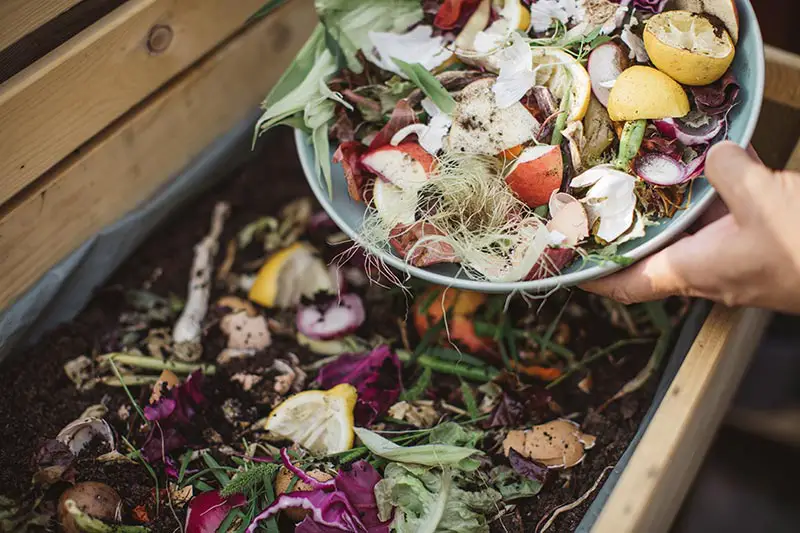
Composting takes place in three separate stages:
Stage 1: Initial Decomposition of Organic Matter
At the first stage of the composting process, the organic matter is broken down into smaller pieces by mesophilic organisms – these are microorganisms that grow best in mid-range temperatures which are neither too hot nor too cool, thriving at around 68 to 113°F. While this stage is taking place over a couple of days, the internal temperature of the compost pile will start to warm up.
Stage 2: Further Decomposition of Complex Organics
After a couple of days, the internal temperature of the compost pile becomes too warm for mesophilic organisms. In this second stage, thermophilic microorganisms take over the decomposition process. Thermophilic organisms thrive at warmer temperatures of 113 to 252°F, at which they’re able to break down proteins, fats, and complex carbohydrates into smaller particles. The second stage can take anywhere from several days up to several months to complete – this timeframe is completely dependent on the conditions of the compost pile.
Stage 3: Final Break Down of Matter
The final stage of the composting process begins when the thermophilic microorganisms start to run out of available organic materials to break down. The internal temperature of the compost pile starts to decrease, which causes the mesophilic organisms to take over the process again. The mesophiles finish breaking down the organic matter, which causes the materials to mature into the final product – usable compost. This last stage takes several months.
How Long Does Compost Take?
Compost can take anywhere from 4 weeks up to 2 years to fully decompose into a usable format. The exact amount of time it will take for your pile of organic matter to turn into usable compost will mainly be determined by the materials you use to compost, the method of composting, and the conditions that the compost is left to develop in. We have gone through the factors that affect the speed at which your compostable materials will break down below.
Size and Type of Organic Matter
The type of materials and size of the individual scraps of organic matter will affect the speed of decomposition. Smaller-sized scraps of material that have been chopped and shredded as small as possible will break down much faster than if the material is thrown in as a whole. Also, having a good balance of carbon-rich (or ‘brown’) materials to nitrogen-rich (or ‘green’) materials will speed up the process – we have gone into more detail about these different materials in the following section.
Aeration or ‘Turning’ of Organic Matter
Regardless of the method of composting, turning the pile to aerate the decomposing matter is an essential step of the process and will affect how long it takes for the matter to break down. Turning over the matter introduces air into it, which is one of the key elements needed in the decomposition process. It also helps to move larger scraps of material to the center where it’s able to break down more quickly.
Hot vs. Cold Composting
There are two different types of composting: either hot composting or cold composting. Hot composting requires more effort to set up and monitor, however it will work more quickly to break down the organic matter and produce usable compost in less amount of time. Cold composting on the other hand requires very little effort, but it will take a lot longer for the materials to break down due to the lower temperatures. See the later section in this article on hot vs. cold composting for a more detailed explanation of these two processes.
What Type of Materials are Used in Compost?
Most biodegradable materials that are used to compost can be categorized as either brown or green materials, depending on how they’re composed.
Brown materials are rich in carbon, providing energy to the microorganisms and giving the compost a light, fluffy texture. The materials categorized as brown are typically fibrous or wood-based, such as dry leaves, branches, stems, tree bark, pine needles, corn stalks, sawdust from untreated wood, wood ash and shredded newspaper.
| Brown Material | Extra Info |
| Wood chips | High in carbon, add sparingly |
| Wood ash | Use ash from clean materials, add sparingly |
| Sawdust pellets | High in carbon, add in layers to prevent clumps forming |
| Straw or hay | Ideally use straw, try to avoid hay with seeds if possible |
| Leaves | Leaves should be shredded to speed up decomposition |
| Pine needles | Highly acidic, add in moderation |
| Shrub prunings | Prunings that are more woody will take longer to decompose |
| Corn cobs, stalks | Cobs should be chopped up to speed up decomposition |
| Shredded paper | Avoid using paper that’s glossy or has colored inks |
| Newspaper | Avoid using newspaper that’s glossy or has colored inks |
| Cardboard | Shred cardboard to prevent matting |
| Coffee grounds | Can also use coffee filters |
| Dryer or vacuum lint | Ideally use lint made of natural fibres |
Green materials are rich in nitrogen, providing the microorganisms with the amino acids and proteins that they need to carry out their processes. The materials typically used as green include manure, fruit and vegetable scraps, coffee grounds, green leaves, and grass clippings.
| Green Material | Extra Info |
| Leftover food scraps | Add with dry carbon (brown) materials |
| Fruit and veg scraps | Add with dry carbon (brown) materials |
| Tea leaves | Can be added loose or in tea bags |
| Grass clippings | Add grass clippings in layers to prevent matting |
| Green comfrey leaves | High in nitrogen, works well as compost activator |
| Lawn and garden weeds | Avoid adding weeds that have gone to seed |
| Flowers and cuttings | Chop up woody stems to speed up decomposition |
| Seaweed and kelp | Add in thin layers, provides a source for trace minerals |
| Chicken manure | High in nitrogen, works well as compost activator |
When building your compost pile, the key is to get an equal balance of ‘brown’ or carbon-rich materials with ‘green’ or nitrogen-rich materials. Some go for a half and half composition of their compost, but it’s often advised to make it up using ⅓ green materials to ⅔ brown materials – the exact ratio is ultimately down to you.
What Can You Compost?
It’s likely that your compost will be mainly made up of waste materials like food scraps and grass clippings. Other household waste items that can be added include newspaper, hair, and nail clippings. See the list below to find out everything you can add to your homemade compost.
Food Waste
- Fruit and vegetable scraps and peels
- Mushroom scraps
- Coffee grounds
- Loose teas and tea bags
- Eggshells
- Nut shells
- Bread, grains and pasta
Yard Waste
- Grass and plant clippings
- Dry leaves
- Wood and bark chips (finely chopped)
- Wood ash
- Sawdust (from untreated wood)
- Hay and straw
Other Waste
- Manure
- Shredded newspaper
- Cardboard
- Lint from dryers and vacuum cleaners
- Hair and nail clippings
- Brown paper bags
- Toothpicks
- Matches
- Cotton and wool rags
Tip: It’s recommended by the USDA to bury any food waste if you opt for an open composting pile or bin. Otherwise, it may attract unwanted wildlife scavenging for food, such as flies, rodents, and raccoons.
What Can’t You Compost?
There are some materials that shouldn’t be used as compost, despite being classed as biodegradable. For instance, dairy and animal products like meat and bones will give off an odor and attract unwanted pests once they start to decompose, so they should be thrown straight into the normal trash can; this also applies to any fats, oils, or pet waste. Also, avoid adding any plant waste that has been infected with disease or pests, as the contamination could spread to your compost and render it unusable.
Food Waste
- Animal meat and bones
- Dairy products
- Egg whites and yolks
Yard Waste
- Plant waste infected with disease or pests
- Coal ash
- Sawdust or wood chips from pressure-treated wood
- Weeds that seed
Other Waste
- Grease
- Chemicals
- Dog or cat waste
- Human waste
- Plastics
- Fats and oils
- Coal or coal ash
Tip: It isn’t recommended to add citrus peels, onions, and garlic to your homemade compost. These materials have been found to repel earthworms, which play a vital role in the balance and health of your garden.
What are the Different Methods of Composting?
There are a few different methods of composting, including using a compost pile, a compost bin, a compost tumbler, or using worms in a process called vermicomposting. The method that you choose will be based on your available resources, as they vary in cost, difficulty, and spatial requirements.
Compost Pile
This is the most simple and commonly used method of composting. The organic materials to be composted are thrown into a pile directly onto the bare ground and left to decompose, being turned periodically to facilitate aeration.
Compost Bin
To provide the compost pile with a bit more containment, you can throw your organic materials into a compost bin to decompose. Compost bins can either be open or enclosed. Open compost bins have a partial structure that keeps materials confined while also allowing oxygen to aerate and ventilate the compost, with one side of the bin being easily accessible to enable you to add compostable materials and turn the pile. Enclosed compost bins have a lid that completely encloses the structure, which eliminates both the sight and smell of the decomposing materials.
Compost Tumbler
Compost tumblers are a more unusual and more efficient type of compost bin. They are shaped like a cylinder and have a handle or hand-held insets that enable the tumbler to turn easily. This provides you with an easier way to turn and tumble your compost while it’s developing.
Vermicomposting
Vermicomposting, or worm composting, is the name given to the process of using worms to create fresh, organic compost. This method utilizes a specific type of worm known as red wigglers which break down the organic matter by eating and digesting it, then expelling it through castings. Vermicomposting is usually carried out in a specialized worm bin and mainly makes use of compostable kitchen waste as the organic matter.
What’s the Difference Between Hot and Cold Composting?
Composting is either classified as ‘hot’ composting or ‘cold’ composting, depending on the balance of nitrogen-rich green matter to carbon-rich brown organic matter in the compostable materials.
Hot Composting
Hot composting requires more active effort and care to carry out, however, it produces usable compost much more quickly than cold composting. To create a hot compost pile, there needs to be a high enough volume of high-nitrogen materials; the ratio should be about 2 parts carbon (brown) matter to 1 part nitrogen (green) matter. Having a variety of differently sized materials, such as having twigs, stalks, and hay in the pile creates pockets of air which helps with aeration, thus speeding up the decomposition process. Well-built hot compost piles should start to heat up within roughly 24 to 36 hours, rising to the ideal temperature of 141°F to 155°F, at which point weed seeds and pathogens will be killed off. The pile will remain at this temperature for several days up to a week or longer; you can use a compost thermometer like this REOTEMP Backyard Compost Thermometer to monitor the temperature, and if it starts to drop or becomes hotter than 160°F, turn the pile over and add some water. This process should be repeated several times before the compost is ready.
Cold Composting
Cold composting requires minimal effort to carry out, but it will take a lot longer before the compost is ready to use. For a cold compost pile, you simply place any type of compostable material into the pile and wait for it to decompose – this is more of an on-the-go method than hot composting. The time it takes before the compost is ready is difficult to determine, as it depends more on the type of organic matter in the pile and the size of the individual scraps. As a note, you should avoid placing diseased plants or weeds that have gone to seed in your compost pile if you use cold composting. The lower temperatures are unable to kill off pathogens and weed seeds, both of which you want to avoid spreading around your soil.
How to Compost (Step-by-Step)
Follow this step-by-step method to find out how to start a compost pile.
1. Find a spot of bare earth to start piling organic materials
Placing the compostable organic matter directly onto the bare earth encourages worms and other helpful microorganisms to infiltrate the pile. These microorganisms help to aerate the matter which speeds up the decomposition process.
2. Place twigs or straw as base layer
Place a layer of twigs or straw where you want to start your compost pile, making this layer a few inches deep. This helps the pile’s drainage and aeration.
3. Alternate between moist and dry materials for next layers
Start adding layers of your compostable organic matter, alternating between moist and dry materials. Moist materials are those such as food scraps, seaweed, and old tea bags etc., and dry materials are leaves, straw, sawdust, and ashes. As a note, if you’re using wood ashes, sprinkle them in fine layers to avoid them from clumping together and slowing down the decomposition process.
4. Add nitrogen-rich material
Make sure to add in nitrogen-rich materials, such as animal manure, ‘green’ manure i.e. clover, wheatgrass, buckwheat, or grass clippings, or any other compostable material that can act as a rich source of nitrogen. This will activate and speed up the decomposition process.
5. Cover the compost pile
Cover up the compost pile with any appropriate material you have laying around, such as wood, plastic sheeting, or even scraps of carpet. Doing so helps the pile to retain both moisture and heat, which are both essential conditions for the decomposition process. Covering the pile also helps to prevent the decomposing materials from becoming over-watered in rainfall.
6. Keep the compost moist
Keep the compost moist by either watering it occasionally yourself or making sure it remains sufficiently moist from any rainfall. You want to aim to keep the pile moist without making it soaked or sodden.
7. Turn the pile every few weeks
Every few weeks, turn the pile over using a pitchfork or shovel. Turning the pile helps to keep the pile aerated with oxygen, which is another essential element in the decomposition process. This step can be skipped if you have been adding layers of coarse materials such as straw, as these materials create sufficient gaps for the pile to be aerated.
8. Adding new materials
Once your compost pile has been established, you should add any additional materials to the pile by mixing them in, as opposed to placing them in layers. This will help keep the pile aerated and ensures the materials will continue to decompose at a good rate.
What are the Benefits of Composting?
Compost Improves Soil Condition
Compost acts as a rich humus for the soil in your lawn and garden, working to improve the condition of the soil by enriching it with nutrients and helping it to retain moisture. It contains all three of the primary nutrients needed by plants to grow – nitrogen (N), phosphorus (P), and potassium (K). It also contains trace amounts of several other essential nutrients such as calcium, magnesium, sulfur, copper, iron, iodine, and zinc, which all contribute to the health of soil and plants. For this reason, compost provides an eco-friendly organic alternative to using chemically synthesized fertilizers. Studies have shown that compost has the ability to increase the soil’s capacity for water retention, productivity, and resilience against pests and disease.
Compost Conserves Water
As we’ve mentioned, studies show that soil spread with compost is able to retain water much more effectively than soil alone – compost has actually been found to hold between 5 to 20 times its own weight in water. So, by spreading compost in your lawn or garden, you’re increasing the amount of water that can penetrate down into the soil where it can reach plants’ roots and encourage their root systems to grow even deeper. Another benefit of this is that it enables the water to seep so deep that it reaches the impervious rock layer, at which point it swells up to replenish nearby ponds, springs, or lakes.
Compost Reduces Soil Erosion
Erosion is most often caused by having an excessive amount of water on the soil. When water is unable to penetrate the ground, it swells up on the ground’s surface then flows off to lower elevations, often taking chunks of topsoil along with it which results in soil erosion over time. This can be prevented by spreading compost, as it acts like a sponge to allow more water to filter into the ground while keeping the topsoil in place.
Compost Introduces Beneficial Organisms to Soil
There are a number of different microorganisms found in compost that help to aerate the soil, fight off plant diseases, and break down organic matter for usage in plants. These helpful organisms include fungi, mites, millipedes, and black soldier flies. As a note, rove beetles, ants, and earthworm mites are some of the pests that you don’t want to see in your compost, as they will disrupt the successful decomposition of your organic matter.
Composting Reduces Household Waste
Composting provides an environmentally friendly way to cut down on wasted food in your household. It has been reported that US retailers and consumers throw away around 60 million tons worth of produce each year, with the most wasted category of food being fruits and vegetables. Even if we make an effort to do everything we can to decrease the amount of food we waste, there will always be certain food scraps that can’t be consumed, such as banana peels. Throwing these scraps on the compost pile provides a great way to repurpose them to benefit the environment and avoid the need to throw them straight into the trash.
Composting Reduces Landfill Waste
The organic materials used in composting can divert as much as 30% of household waste and prevent it from ending up in the garbage can, which in turn prevents it from ending up in a landfill. When waste materials are placed in a landfill, they don’t get the aeration necessary to decompose quickly; the slow decomposition causes the waste to release methane gas as it breaks down, which contributes to the increasing rate of global warming and climate change. Composting the same materials provides them with the ideal conditions to break down more quickly, enabling the materials to benefit the environment, rather than harm it.
Composting is Better for Environment
Composting can be used as a natural, organic alternative to synthesized chemical fertilizers, in order to fertilize lawns and garden soil. While synthetic fertilizers work more quickly than compost and other organic fertilizers, they only provide a short-term boost in nutrients and need to be reapplied to the area much more frequently to maintain their effectiveness. Organic fertilizers and compost on the other hand will continue to enrich and condition the soil long after they have been applied, supplying the soil and plants not only with essential nutrients that they need to grow, but also with the many other benefits of organic matter listed here.

